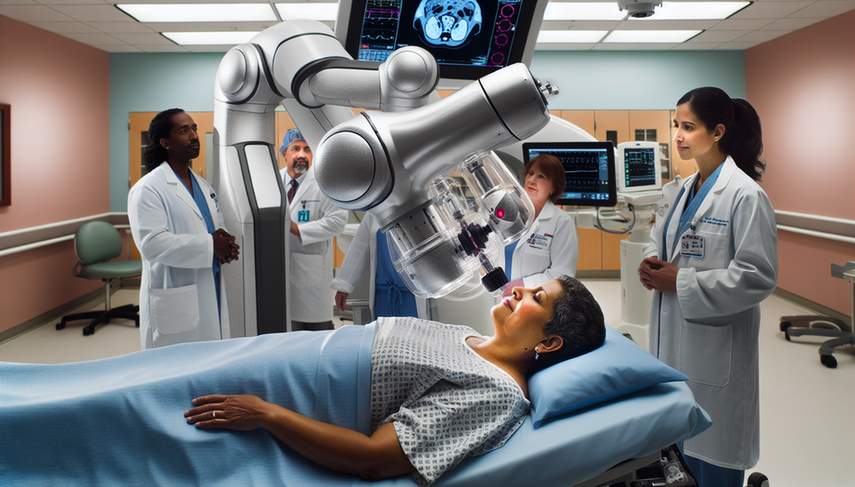Robotic Arm-Guided Biopsies: Enhancing Sampling Precision in Oncological Pathology

In the last decade, the integration of robotic technology in medicine has revolutionized the way surgical and diagnostic procedures are performed. One of the most significant advancements is the use of robotic arm-guided biopsies, which have proven to enhance sampling precision in oncological pathology. This approach not only optimizes sample acquisition but also minimizes the risk of complications and improves clinical outcomes.
Advancements in Robotic Biopsy Technology
The use of robotic arms in biopsy procedures has allowed for unprecedented precision in locating and extracting tissue samples. For instance, the ROSA system, utilized in pediatric neurosurgery, has demonstrated high accuracy and versatility, facilitating electrode placement and performing biopsies with minimal deviation from the target [1]. Similarly, in the field of thoracic surgery, robot-assisted lobectomy has shown significant advantages in terms of visualization and instrument flexibility, which is crucial for procedures requiring high precision [2].
In oncology, robotic-assisted bronchoscopy for pulmonary nodules has been evaluated in a multicenter study, showing that this technology facilitates the safe and effective sampling of peripheral pulmonary nodules [3]. Furthermore, the integration of electromagnetic navigation systems in sentinel lymph node biopsy has proven to be feasible and safe, enhancing the precision in identifying and extracting lymph nodes [4].
Conclusions
The implementation of robotic arm-guided biopsies represents a significant advancement in sampling precision for oncological pathology. These technologies not only improve the accuracy of sample acquisition but also reduce procedure time and the risk of complications. As technology continues to advance, we are likely to see even greater adoption of these techniques across various areas of medicine, thereby optimizing the diagnosis and treatment of oncological diseases.
Referencias
- [1] Applications of a robotic stereotactic arm for pediatric epilepsy and neurooncology surgery.
- [2] Robotic-Assisted Sleeve Lobectomy Using the Four-Arm Technique in the DaVinci Si® and Xi® Systems.
- [3] Shape-sensing robotic-assisted bronchoscopy for pulmonary nodules: initial multicenter experience using the Ion™ Endoluminal System.
- [4] Feasibility of Image-guided Navigation with Electromagnetic Tracking During Robot-assisted Sentinel Node Biopsy: A Prospective Study.
Created 24/1/2025
